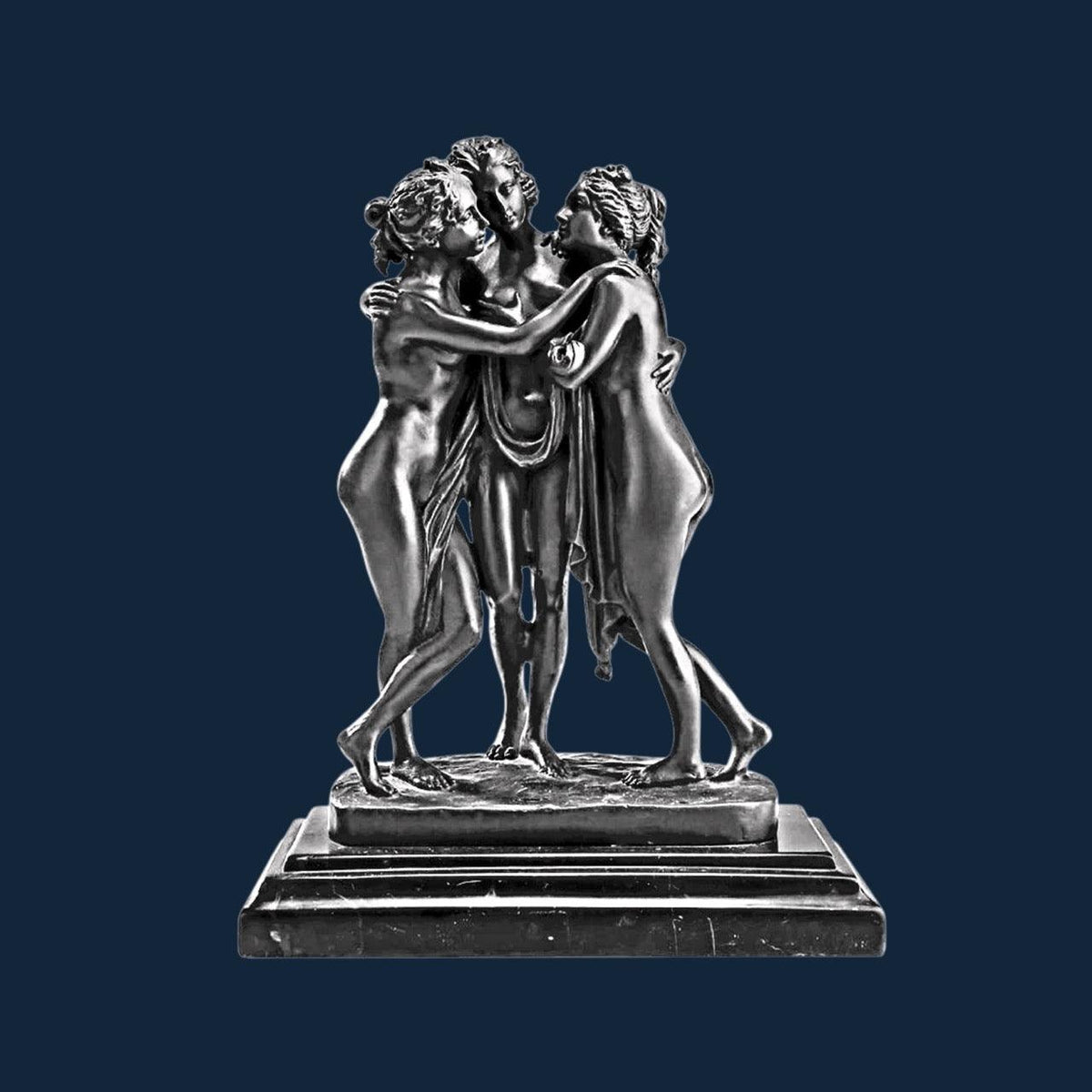10 Things You Didn't Know About The Goddess Charites
Jun 26, 22

10 Things You Didn't Know About The Goddess Charites
The Charites are enchanting goddesses of beauty, nature and fertility. Often referred to as the ‘Graces’ in English, they inspire feelings of admiration, gratitude and joy in those who come into contact with them.
As a result, the presence of the Charites is often felt when we come into contact with beautiful things in nature or experience something that fills us with gratitude, such as wholesome natural beauty or acts of kindness. In this post, we will explore 10 things you may not know about the Charites.
Who are the Charites?
The Charites are three goddesses often known as the ‘Graces’ in English. Their names are Euphrosyne, Thalia and Aglaea and they are the daughters of Zeus and Eurynome. The Charites were an important part of the Greek pantheon and were associated with fertility, nature and beauty, as well as gratitude, admiration and joy.
The Charites were often depicted as young women of child-bearing age, wearing crowns of flowers and holding vessels of nectar and other items related to their functions as goddesses of beauty and fertility.
The Charites were also commonly depicted in paintings, mosaics and sculptures as dancing and holding hands with the Graces, or with the Horai.
Where are the Charites from?
The Charites have been a part of the Greek pantheon since antiquity and are depicted throughout Greek art and architecture. They were likely associated with fertility and the harvest in the early stages of their worship.
As the worship of the Charites evolved, so did their place in the pantheon. They began to be depicted in paintings and other art forms with items related to their role as goddesses of beauty and nature. They also became associated with a sense of gratitude and admiration for natural beauty and acts of kindness.
What do we know about the Charites?
The Charites and the Horai are often depicted as a group of three dancing goddesses. Like the Graces, the Charites inspire a sense of admiration, gratitude and joy. The Charites were associated with the harvest and fertility in the early stages of worship. Later on, they were depicted in art with items related to their roles as goddesses of beauty and nature.
The Charites also became associated with a sense of gratitude and admiration for natural beauty and acts of kindness. The Charites were often depicted with baskets full of flowers or holding vessels of nectar. The nectar was connected to their role as goddesses of fertility and beauty. The ichor, or blood, of the gods flows in the veins of humans according to a branch of ancient Greek mythology.
The Charites and Greek art and architecture
The Charites have been depicted in Greek art and architecture since antiquity. They are often depicted in paintings and mosaics as dancing, holding hands with other goddesses, or with the Graces.
The Charites were also depicted on Greek coins. The goddesses were often depicted with baskets of flowers or as young women holding vessels of nectar. The Charites were also sometimes depicted on temples as child-bearing women with cornucopias (a horn-shaped harvest basket) or with baskets of flowers.
The story of the Charites and Zephyros
Zephyros was the guardian god of the west wind and one of the five gods who held the world’s mountains up on their shoulders. He was also the lover of the Charites. The story goes that the Charites were walking through the forest one day admiring the nature when they caught sight of a handsome young man who was plucking flowers from a tree.
The young man was Zephyros who, according to one version of the story, was upset that the flowers were being plucked from a tree. He turned his lover into a flower. Another version of the story claims that Zephyros was upset because he was plucking the flowers from a tree that was sacred to the gods of the underworld. He turned his lover into a flower so she would never be plucked again.
Conclusion
The Charites are enchanting goddesses of beauty, nature and fertility. They inspire feelings of admiration, gratitude and joy in those who come into contact with them. As a result, the presence of the Charites is often felt when we come into contact with beautiful things in nature or experience something that fills us with gratitude, such as wholesome natural beauty or acts of kindness.
The Charites have been a part of the Greek pantheon since antiquity and have been depicted in paintings and other art forms with items related to their roles as goddesses of beauty and nature. The Charites have also been depicted in paintings and other art forms as dancing, holding hands with other goddesses, or with the Graces.





